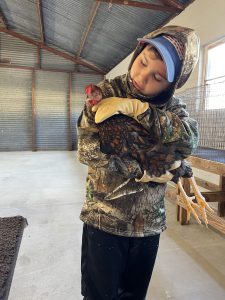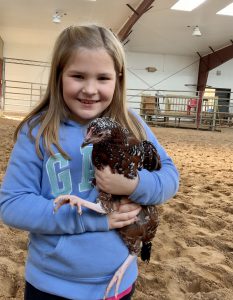If you have seen the news, weather, or even talked to your neighbor, then you know, it’s gonna be cold! It is going to be so cold, people from Florida don’t know what to do. Here are a few ideas how to protect your chick chain chicks. During this upcoming cold snap, your chicks will be between two and half to three and a half months old. They are fully feathered out and should be able to handle the weather that is “normal” for our area. The main thing to keep in mind in the next couple of days is that the upcoming weather will not be normal for our area.
There are several breeds that are hardier to the colder weather. These breeds include: Americauna, Austrolorp, Barnevelder, Brahma, Buckeye, Cochin, Delaware, Dominique, Faverolle, Jersey Giant, Marans, New Hampshire, Orpington, Plymouth Rock, Rhode Island Red, Sussex, Welsummer, and Wyandotte. Now, if you have one of these breeds, it doesn’t mean that you are out of the water. Additional care will need to be taken for all your chicks, no matter their breed.
WATER
Speaking of water, that is one of the main things you will need to be concerned with during the weather that is approaching. “They” are calling for over 34 hours of below freezing temperatures. The main concern for your birds will be heat and water. Your water will freeze over and will need to be checked on several times during the day. Add warm, not hot water to the poultry waterer. If you make it too hot, the chicks may burn themselves. Overnight, it is best to empty the waterers if possible to prevent ice. Refill them in the morning and throughout the day with warm water.
WIND
The strong wind is another concern. The weather advisory is calling the gust of wind that we will experience an “artic blast”. The main thing for your birds is to keep them out of the wind. This does not mean that you need to bring them inside. Simply putting up a block for the north wind will be enough. That block can be a sheet of plywood, some tin or even plastic sheeting. Apply something to the north end of the coop to help keep the wind down. Do not wrap the entire coop, just block the north end. If your coop has a natural north wind block, like bushes or if it is placed on the south side of your garage, you should be fine.
WARMTH
The next item to consider is to give them some warmth. This can be accomplished with a red heat bulb in a clamp light. I found mine on sale at Tractor Supply. The red bulb should be clamped about three to four feet above the floor of the coop. This will prevent any accidental burning of the chicks or the coop. Coop heaters are also available and are safer inside the coop. Another option is hay. Hay will provide warmth for your chicks and help with the chill of the ground. If you use hay, be very careful not to place your heat lamp too close because it could start a fire! The last item to assist with warmth is food. The actual act of eating food will provide warmth to your chicks’ bodies. Make sure they have plenty of food. Remember, scratch or cracked corn is essentially candy for them. Just like any candy, we want to limit how much of that they get. I bet if you mixed a little with their grower crumbles, they would not argue about it.
 The main thing to remember with this cold snap is that your animals depend on you. Get bundled up and head outside and make sure they have clean, warm water and food. The good news is that we live in Florida and this is only for a couple of days.
The main thing to remember with this cold snap is that your animals depend on you. Get bundled up and head outside and make sure they have clean, warm water and food. The good news is that we live in Florida and this is only for a couple of days.
Enjoy the change in weather and stay warm yourselves.
Prudence Caskey, 4-H Extension Agent II
Santa Rosa County Extension
Institute of Food and Agricultural Sciences
6263 Dogwood Drive
Milton, FL 32570
(850) 623-3868
- Chick Chain Teaches Science and Workforce Ready Skills - March 17, 2023
- Are your Chickens Ready for Frigid Temps? - December 21, 2022
- Cultivating a Growth Mindset - August 11, 2022

